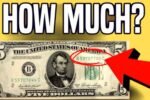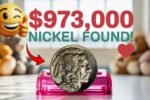War-Era Jefferson Nickel: Not every coin in your pocket tells a story, but the Jefferson nickel from the World War II era certainly does. At first glance, it might just look like another five-cent piece. But behind its dull silver shine is a piece of American history that has gained both collectors’ attention and real value over the years.
The Birth of the Jefferson Nickel
The Jefferson nickel was first introduced in 1938, replacing the Buffalo nickel. It featured a portrait of Thomas Jefferson on the front and his home, Monticello, on the back. This design stayed mostly the same for many years, but something unusual happened during the 1940s that would make a few versions of this coin incredibly special.
Wartime Changes That Changed Everything
When the U.S. entered World War II, many materials, including nickel, were needed for the war effort. Nickel was essential for making weapons and military equipment. To save it, the U.S. Mint had to change the metal used in the five-cent coin. From mid-1942 to 1945, the Jefferson nickel was made using an alloy of 35% silver, 56% copper, and 9% manganese.
This made the war-time nickels look a bit different and wear down in a different way compared to the usual ones. But what really sets them apart is the large mint mark above the dome of Monticello on the back — a feature never seen before on nickels. It was placed there so people could easily spot the silver ones.
Why These Nickels Are So Valuable Today
Most coins are worth only their face value unless they’re rare, contain precious metals, or have some sort of error. The war-time Jefferson nickels check all these boxes. Since they contain silver, they already have value beyond five cents. Add to that their historical significance and limited production years, and you’ve got a coin that collectors hunt for.
Certain ones are even more valuable — especially if they are in perfect condition or have rare minting mistakes. One such example is the 1943-P “Full Steps” nickel. If the lines on Monticello’s steps are fully visible and sharp, the coin is considered rare and can sell for thousands of dollars.
The Famous 1943/2 Overdate Error
One of the most valuable Jefferson nickels ever found is the 1943/2-P overdate error coin. This happened when a 1942 coin die was mistakenly re-used in 1943, causing a faint “2” to appear under the “3” in the year. These kinds of minting errors are rare and highly sought after by collectors, making them very expensive.
A Table Showing Key Dates and Values
Here’s a simple table showing some of the most famous war-time Jefferson nickels and what they might be worth if they are in excellent condition:
| Year & Mint Mark | Key Feature or Error | Estimated Value (High Grade) |
|---|---|---|
| 1942-P | First silver alloy, large mint mark | $75–$200 |
| 1943/2-P | Overdate error | $2,000–$15,000+ |
| 1943-P “Full Steps” | Clear Monticello steps detail | $1,000–$3,000 |
| 1944-D | Common silver wartime coin | $20–$100 |
| 1945-S | Last year of silver composition | $20–$80 |
Collectors and Coin Dealers Take Notice
These nickels have become a favorite for collectors not just because of their silver content, but because of what they represent. They are coins that were used during a time of global conflict, made with materials carefully chosen to support a nation at war. Owning one is like owning a small piece of history.
Coin dealers often look for these war-time nickels in bulk lots or old coin jars. They know the signs — large mint marks, special dates, and clean details. Even a well-worn example can fetch a good price if it’s rare enough.
Can You Still Find These Coins Today?
Yes, surprisingly, war-era Jefferson nickels still show up from time to time in everyday change or old coin collections. While the most valuable ones are rare, millions were made during the war, and some have survived in great condition. Checking your old coin jars or rolls from the bank might be worth it.
Why the Story of the Jefferson Nickel Matters
More than just metal and numbers, coins carry the story of the time they were made in. The war-era Jefferson nickel is a reminder of a time when even small things — like the metal in coins — had to be adjusted to support a much bigger cause. It shows how the entire nation came together, even in the smallest ways, to fight a world war.
FAQs
Q: What years were the silver Jefferson nickels made?
A: From mid-1942 through 1945, during World War II.
Q: How can I tell if I have a silver war nickel?
A: Look for a large mint mark (P, D, or S) above the dome on the back of the coin.
Q: Are war nickels pure silver?
A: No, they contain 35% silver along with copper and manganese.
Q: Can these nickels still be used as money?
A: Yes, they’re still legal tender, but they’re worth much more to collectors.
Q: What’s the most valuable Jefferson nickel?
A: The 1943/2-P overdate error in high-grade condition is among the most valuable.




